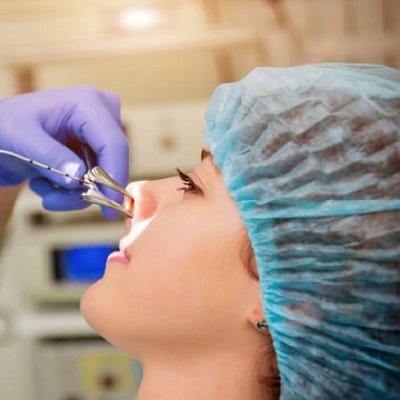How to Maintain Nasal Health After Septoplasty and Turbinate Reduction

Undergoing nasal surgery such as septoplasty combined with turbinate reduction can be life-changing for individuals struggling with chronic nasal obstruction and breathing difficulties. Those opting for the Best Septoplasty & Turbinate Reduction Muscat often seek not only immediate relief but also long-term nasal health improvements. However, achieving and sustaining optimal nasal function after surgery requires attentive care and lifestyle adjustments. Maintaining nasal health post-procedure is essential to prevent complications, enhance healing, and enjoy the full benefits of improved airflow.
This comprehensive guide explores the best strategies to maintain nasal health after septoplasty and turbinate reduction, including practical tips, lifestyle modifications, and expert recommendations.
Understanding Septoplasty and Turbinate Reduction Recovery:
What to Expect After Surgery:
Septoplasty corrects a deviated septum by repositioning or removing cartilage and bone that obstruct the nasal passage, while turbinate reduction targets swollen turbinates to increase airflow. Recovery generally involves swelling, mild congestion, and crusting as the tissues heal.
Patients seeking the Best Septoplasty & Turbinate Reduction Muscat experience relief from nasal blockage once the initial swelling subsides, but maintaining these results depends largely on postoperative care and ongoing nasal hygiene.
Typical Healing Timeline:
-
First week: Swelling peaks; mild bleeding and crusting common
-
Weeks 2-4: Gradual improvement in breathing; crusts start to diminish
-
Months 1-3: Tissues fully heal; nasal function stabilizes
-
Long-term: Continued nasal health depends on care and environment
Proper nasal care during and after these phases supports tissue regeneration and reduces the risk of infections or adhesions.
Essential Nasal Hygiene Practices After Surgery:
Gentle Nasal Irrigation:
Using saline nasal sprays or rinses is one of the most effective ways to keep the nasal passages moist and free from crusts or debris. This prevents buildup that can cause irritation or infection.
-
Use isotonic saline sprays multiple times daily as advised.
-
Nasal irrigation with a neti pot or squeeze bottle can be introduced after initial healing to flush out mucus gently.
-
Avoid tap water; always use sterile or distilled water for rinses.
Avoiding Nose Picking and Blowing:
Healing nasal tissue is delicate and susceptible to damage. Avoiding aggressive nose blowing or picking minimizes trauma and bleeding.
-
Gently dab the nose with a soft tissue when needed.
-
If congestion is severe, consult your healthcare provider rather than forcing nasal clearing.
Humidifying Your Environment:
Dry air can exacerbate nasal dryness and crusting, slowing down healing and increasing discomfort.
-
Use a humidifier, especially in air-conditioned or heated rooms.
-
Keep nasal tissues hydrated to promote comfort and better healing.
Lifestyle Adjustments for Sustained Nasal Health:
Avoid Irritants and Allergens:
Exposure to cigarette smoke, strong perfumes, dust, and allergens can inflame nasal passages and compromise surgical results.
-
Limit time in smoky or polluted environments.
-
Use air purifiers at home if sensitive to allergens.
-
Wear masks in dusty or highly polluted areas to protect nasal mucosa.
Stay Hydrated and Maintain a Healthy Diet:
Hydration helps thin mucus secretions, making drainage easier and reducing the chance of crust formation.
-
Drink plenty of water throughout the day.
-
Incorporate anti-inflammatory foods rich in antioxidants, such as fruits and vegetables, to support healing.
Practice Safe Physical Activity:
While staying active is important, heavy exertion can increase nasal pressure and cause bleeding or swelling.
-
Avoid heavy lifting, bending over, or vigorous exercise for the first 2-3 weeks.
-
Gradually resume moderate activities after consulting your doctor.
Monitoring Symptoms and Knowing When to Seek Help:
Recognizing Normal vs. Concerning Signs:
Post-surgical symptoms like mild congestion, occasional spotting, or minor discomfort are typical. However, certain symptoms warrant prompt attention:
-
Persistent or heavy nasal bleeding beyond the first few days
-
Increasing pain or pressure not relieved by medication
-
Foul-smelling nasal discharge or fever suggesting infection
-
Worsening nasal blockage or sudden loss of smell
Importance of Follow-Up Care:
Regular check-ups with your ENT specialist ensure proper healing, allow early intervention if complications arise, and help maintain nasal function. Adhering to follow-up schedules is crucial for long-term success after the Best Septoplasty & Turbinate Reduction Muscat.
Preventing Common Postoperative Issues:
Managing Crusting and Scabbing:
Crusting is normal but excessive crusts can block airflow and cause discomfort.
-
Use saline sprays to soften crusts.
-
Avoid scratching or forcibly removing crusts.
-
Attend professional nasal cleaning sessions if recommended.
Avoiding Adhesions and Scar Tissue Formation:
Synechiae (adhesions) can form between nasal tissues, causing blockage.
-
Follow nasal hygiene instructions diligently.
-
Report persistent nasal obstruction early.
-
Consider gentle nasal massage or prescribed treatments if advised.
Long-Term Nasal Care Recommendations:
Maintain Daily Nasal Hygiene Routine:
Even after complete healing, continuing saline sprays and humidification helps preserve nasal moisture and function.
Seasonal Care:
During allergy seasons or dry winters, increase nasal care efforts to prevent inflammation and blockage.
Address Underlying Allergies or Conditions:
Managing allergies or chronic sinus issues can protect the nasal passages and surgical outcomes.
-
Use allergy medications as prescribed.
-
Avoid known triggers proactively.
The Role of Environmental and Personal Factors:
Impact of Climate:
Muscat’s dry climate can challenge nasal moisture balance post-surgery.
-
Prioritize indoor humidity control.
-
Use nasal gels or ointments if dryness persists.
Smoking and Pollution:
Exposure to tobacco smoke or heavy pollution delays healing and damages nasal tissues.
-
Avoid smoking and secondhand smoke entirely.
- Limit exposure to outdoor pollution when possible.
Emotional and Psychological Support:
Coping with the Healing Process:
Recovery can be uncomfortable and sometimes frustrating. Patience and realistic expectations help ease stress.
Seeking Support:
Talking with healthcare providers about concerns or symptoms improves confidence and recovery outcomes.
Conclusion:
Achieving the best results from the Best Septoplasty & Turbinate Reduction Muscat involves more than the surgery itself. Committing to diligent nasal hygiene, avoiding irritants, adhering to activity guidelines, and attending follow-ups are key to maintaining nasal health and breathing comfort long-term. Awareness of warning signs and prompt medical consultation can prevent complications and ensure the surgery’s benefits last a lifetime. With the right care, patients can enjoy clearer, healthier nasal passages and an improved quality of life.
- Art
- Causes
- Crafts
- Dance
- Drinks
- Film
- Fitness
- Food
- Games
- Gardening
- Health
- Home
- Literature
- Music
- Networking
- Other
- Party
- Religion
- Shopping
- Sports
- Theater
- Wellness
- IT, Cloud, Software and Technology


